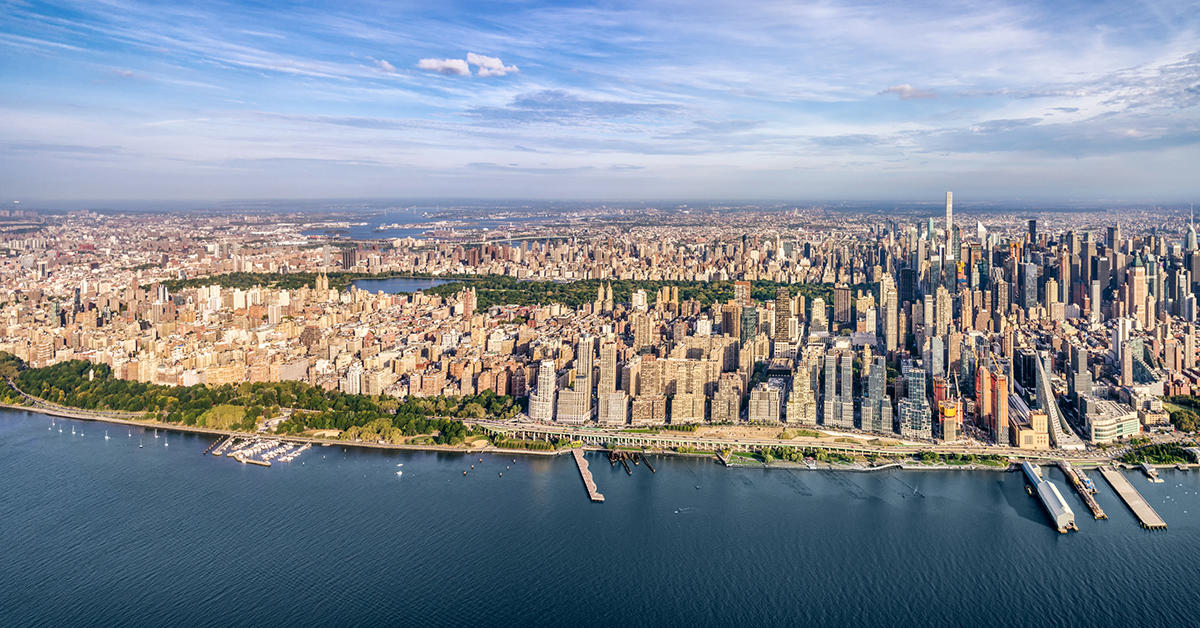Manhattan’s rental market improves
The luxury sales slump continues to be a silver lining for Manhattan’s rental market. Rents rose in February as would-be buyers took refuge in rentals, according to a Douglas Elliman report. The median net effective rent rose 4.1 percent year-over-year, to $3,297, the second straight monthly increase in Manhattan. The share of new leases with concessions was 41.6 percent, compared to 47.6 percent a year earlier. “The rental market is turning, but slowly,” said the report’s author, Jonathan Miller, CEO of appraisal firm Miller Samuel. “It seems largely dependent on the sales market.” A separate report from Citi Habitats showed that Manhattan’s vacancy rate fell for the second straight month, to 1.4 percent, its lowest level since September. Concessions remained high, however, in the outer boroughs. In Brooklyn, the market share for rental concessions was 47.5 percent, a drop that helped force down the median net effective rent 3.1 percent in February, to $2,632, per Elliman. In Northwestern Queens, the market share of rental concessions hit its third-highest point at 48.8 percent, up from 39.5 percent in February 2018, an increase that helped push down the median net effective rent to $2,714.
Upper West Side townhouse bid-ask spread shrinks
Within the past 18 months, the bid-ask spread for townhouses on Manhattan’s Upper West Side has tightened. In the first quarter of 2019, the spread hit a record low of 12.7 percent, according to a report by luxury townhouse brokerage Leslie J. Garfield. That percentage is a reflection of asks dropping as the average sales price remains stagnant, the Garfield analysis said. While sales volume is down year-over-year — there were four Upper West Side townhouse sales in January and February of this year compared to 12 during the same period in 2018 — the average sales price has also remained relatively flat. There is hope on the horizon for sellers, however, as the Garfield report noted that transactional townhouse activity should pick up heading into spring. But even those potential gains could be temporary. In May 2018, the Upper West Side’s bid-ask spread reached 29.6 percent, a metric that has consistently fallen since that time.
Bronx’s Grand Concourse sees home prices soar
As housing demand has risen along the Bronx’s Grand Concourse, so have prices. A recent analysis by real estate database PropertyShark found that the median home sales price along the boulevard surged 68 percent between 2014 and 2018. In addition to being a gateway to the Bronx from Manhattan, the area has its own cultural scene and history (it’s home to Yankee Stadium). Investment activity picked up after 2015, with more than 700 affordable and market-rate units coming online during the next two years. The Grand Concourse’s strategic location has also helped the thoroughfare recruit new residents who have been priced out of other boroughs. PropertyShark’s report cited an oft-repeated phrase — “The hottest neighborhood in Harlem is the Bronx” — used by its founder, Matthew Haines. The South Bronx is one of several areas in the borough that’s started gentrifying, a trend that PropertyShark expects to spread farther north in the borough. In Mott Haven, just north of Manhattan, the median home sales price surged 124 percent within the past five years, to almost $450,000 in 2018, nearly double the Bronx’s $292,250 median price.
‘Bulk buyers’ adding multiple units in luxury developments
Financial advisers typically recommend a diverse portfolio of investments. But some so-called bulk buyers are now taking a different approach, opting instead to buy multiple units within the same luxury development. The multiple units can be cobbled together to create a dream home, generate rental income or house extended family and guests, according to a PropertyShark analysis, which noted that the strategy requires faith in a specific high-end project and its management team. PropertyShark found that 211 individuals in New York City own between three and 10 units in a single building, with at least an additional 181 such owners in Los Angeles and 342 in Chicago. (The PropertyShark report didn’t track owners with more than 10 units in a building or those that used LLCs.) And, as is the case with bulk buying other home goods, savvy speculators making multiple real estate investments may be able to secure discounts and turn a profit, assuming they secured a favorable price of entry and the right location to park their capital.

